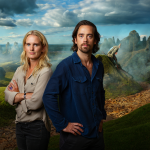
Hyperinflation Can Occur When the Fed Loses Its Marbles
Oct 29, 2024
Introduction: The Perils of Monetary Madness
In economic nightmares, few scenarios loom as large as hyperinflation. This essay delves into the critical role of central banks, with a particular focus on the Federal Reserve (Fed), in preventing or inadvertently fostering such extreme economic instability. As we navigate the complex landscape of monetary policy, it’s worth recalling the words of William James, the eminent American psychologist, who astutely observed the misery that indecision can bring. In the face of potential economic turmoil, clarity and decisive action become paramount.
Hyperinflation, defined as a rapid and uncontrolled increase in prices, typically occurs when there’s a loss of confidence in a country’s currency or economic management. The United States has been fortunate to avoid such a catastrophic financial event, mainly due to the vigilance and tools at the disposal of the Federal Reserve.
The Fed’s Crucial Role: The Federal Reserve is a bulwark against runaway inflation in the United States. If economists detect early signs of potential hyperinflation, the Fed can deploy various monetary policy tools to prevent its onset. This proactive approach is critical, as the Fed aims to intervene long before inflation can reach the staggering 50% monthly rate that characterizes hyperinflation.
The Nature of Hyperinflation Beast
Hyperinflation is a dire economic event when a country experiences an extraordinarily rapid and uncontrolled price increase. This is more than a simple rise in the cost of living; it signifies a breakdown in the economy’s stability, eroding the purchasing power of the nation’s currency. Essential goods become unaffordable for the average citizen, and savings are swiftly decimated. The velocity of money circulation increases as people rush to spend their money before it loses value, exacerbating the inflationary spiral. Businesses struggle to set prices accurately, which can reduce investment and employment, further destabilizing the economy. The social impact is profound, as income inequalities widen and the middle class may be particularly hard hit, leading to increased poverty and social unrest.
The Federal Reserve, the central bank of the United States, wields significant influence over the nation’s monetary policy. One of its primary goals is to maintain price stability, ensuring that inflation remains manageable. However, when the Fed acts “insane in the membrane,” as your prompt suggests, it can inadvertently contribute to the conditions that lead to hyperinflation.
Reckless monetary policies, such as excessive money printing and irresponsible debt accumulation, can set the stage for this dire economic scenario. When the Fed lowers interest rates to near zero for an extended period or engages in aggressive quantitative easing without corresponding economic growth, it risks creating a disconnect between the supply of money and the economy’s actual output. This mismatch can devalue the currency rapidly, setting off hyperinflationary pressures that are difficult to reverse without significant economic pain.
Historical Context: A Walk Through Economic Crises
The Dot-Com Bubble and the Fed’s Misguided Actions
One of the most notable examples of the Fed’s questionable actions leading up to a financial crisis was during the dot-com bubble of the late 1990s. Under Alan Greenspan’s leadership, the Fed kept interest rates artificially low, fueling an unsustainable surge in stock market valuations, particularly in the technology sector. When the bubble inevitably burst, it triggered a recession, leaving many investors with substantial losses.
The 2008 Housing Crisis: A Tale of Negligence
Another instance of the Fed’s questionable judgment was during the 2008 global financial crisis. Easy credit policies, lax lending standards, and failure to adequately regulate the housing market created a massive housing bubble. When this bubble burst, it resulted in a wave of mortgage defaults, bank failures, and a deep global recession. Once again, the Fed’s policies played a significant role in creating the conditions for economic turmoil.
Ancient Wisdom for Modern Times
Solon, the Athenian Lawmaker (c. 638–558 BCE)
In the heart of ancient Athens, Solon emerged as a visionary statesman and lawgiver who deeply understood the perils of economic instability and the toxic nature of excessive debt. Solon sought to lighten the heavy debt burden that oppressed Athenian citizens through his landmark reforms, known as the Seisachtheia. His policies were designed not merely as temporary relief but as a strategic measure to foster long-term economic stability and prevent the ruin of his society. Solon’s forward-thinking approaches highlight the timeless necessity for responsible monetary policies that prioritize the welfare and stability of the population.
Confucius, the Chinese Philosopher (551–479 BCE)
One of the most esteemed Chinese philosophers, Confucius, provided profound insights into the management of economy and governance that resonate even in contemporary times. He championed the virtues of moderation and prudence in managing state affairs. In his revered work, the “Analects of Confucius,” he expressed concern over governmental fiscal practices, famously stating, “When there is an excess of revenue, people will not be anxious to labour. When there is excess labour, the people will be anxious to labour, but there will be no exploitation of the common people.” This wisdom encapsulates the delicate balance that governments must maintain to foster a fair and productive society, warning against the consequences of fiscal excess and labour exploitation.
Hyperinflation’s Dire Consequences and Real-World Examples
The German Weimar Republic: A Case Study in Hyperinflation
One of the most notorious examples of hyperinflation occurred in the Weimar Republic during the 1920s. Reckless money printing to finance World War I and the subsequent economic crisis led to a staggering inflation rate. By November 1923, prices doubled daily, rendering the German mark virtually worthless. This economic chaos contributed to social unrest and political instability, ultimately paving the way for the rise of the Nazi regime.
Zimbabwe’s Hyperinflationary Crisis (2003–2009)
More recently, Zimbabwe experienced a devastating hyperinflationary crisis. Poor economic policies, excessive money printing, and political instability led to a hyperinflation rate estimated at 89.7 sextillion per cent in November 2008. Prices doubled every 24.7 hours, rendering the Zimbabwean dollar useless. This crisis caused widespread poverty, food shortages, and a country’s economic infrastructure collapse.
Preventing Hyperinflation: A Modern Perspective
Central bank independence is crucial to prevent hyperinflationary disasters. The Fed must maintain its autonomy from political influence to make decisions in the country’s best economic interests. This independence allows the Fed to implement prudent monetary policies, manage interest rates effectively, and maintain price stability.
Fiscal Responsibility and Transparency
Governments play a pivotal role in preventing hyperinflation through fiscal responsibility. This includes maintaining a balanced budget, managing debt sustainably, and ensuring transparency in budgetary policies. Irresponsible deficit spending and excessive debt accumulation can lead to the very conditions that fuel hyperinflation.
There is no more miserable human being than one in whom nothing is habitual but indecision, and for whom the lighting of every cigar, the drinking of every cup, the time of rising and going to bed every day, and the beginning of every bit of work, are subjects of express volitional deliberation. William James 1842-1910, American Psychologist, Professor, Author
Practical Strategies for Investors
During periods of economic instability and potential hyperinflation, investors can protect themselves through diversification and hard assets. Diversifying portfolios across various asset classes, including stocks, bonds, and alternative investments, can provide a hedge against inflation. Additionally, investing in tangible assets, such as real estate, precious metals, and commodities, can offer a store of value that retains its worth during economic turmoil.
Hedging against currency risks becomes essential during hyperinflation. Investors can consider foreign currency holdings or investments in multinational companies with diverse revenue streams. Global diversification helps shield portfolios from the full impact of a single country’s economic woes.
Learning from History: A Wise Investor’s Advantage
Warren Buffett’s Perspective
Warren Buffett, the renowned investor, has cautioned against the perils of inflation and the importance of investing in tangible assets. He once stated, “The best thing to do is to avoid doing dumb things with your money so that you have it when you need it.” Buffett’s focus on long-term value and his aversion to speculative bubbles offer valuable lessons for investors navigating economic uncertainty.
Ray Dalio’s Principles
Ray Dalio, the founder of Bridgewater Associates, emphasizes the importance of understanding economic cycles and historical patterns. His “Principles” offer a comprehensive guide to navigating market shifts, including the potential for hyperinflation. Dalio encourages investors to diversify their portfolios and be prepared for various economic scenarios, including the impact of central bank policies.
Conclusion: Hyperinflation Can Occur When
Hyperinflation represents a severe economic catastrophe that can unravel the fabric of societal stability and erode the welfare of its populace. The Federal Reserve, pivotal in ensuring price stability, often finds its misjudgments exacerbating the crises it aims to prevent. Historical examples, ranging from Weimar Germany to modern Zimbabwe, vividly illustrate the destructive path of unchecked monetary expansion and the critical importance of sound fiscal oversight.
Investors and policymakers must heed the lessons embedded in ancient wisdom and recent history to shield their economic futures from such volatility. Responsible monetary policies are not merely prudent but essential defences against the capricious waves of economic turmoil. Strategic investment practices, informed by a deep understanding of economic cycles and historical outcomes, provide a robust framework for navigating financial uncertainties.
Echoing William James’s timeless insight, indecision in the face of economic flux can be profoundly harmful. Proactive financial planning and a well-calibrated response to emerging economic indicators are crucial. By embracing a balanced approach that combines historical insights with contemporary economic principles, we can fortify our economic landscapes against hyperinflation and ensure a stable, prosperous future for the coming generations.
Most men ebb and flow in wretchedness between the fear of death and the hardship of life; they are unwilling to live, and yet they do not know how to die. Seneca, 4 B.C. 65 A.D., Spanish-born Roman Statesman, philosopher
Intriguing Reads Worth Your Attention
Inductive Versus Deductive reasoning












